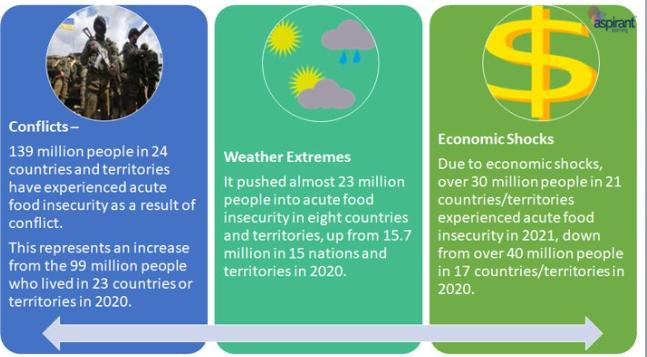Key Takeaways
- Global Report on Food Crises 2022 released by the Global Network Against Food Crises (GNAFC)
- The report is the GNAFC’s flagship publication, and it is made possible through the Food Security Information Network (FSIN).
About Global Report on Food Crises 2022
- In 2021, 40 million more people than in 2020 suffered acute food insecurity at crisis or severe levels.
- Acute food insecurity affects almost half a million Ethiopians, southern Madagascar residents, South Sudanese, and Yemenis.
- In 2021, about 193 million people in 53 countries and territories suffered acute food insecurity that was crisis-like or worse.
- Reasons for Food Insecurity

- What to do?
- To effectively address the core causes of food crises, take an integrated approach to prevention, foresight, and improved targeting.
- Prioritise smallholder agriculture as a first-line humanitarian response, as a means of overcoming access barriers and reversing unfavourable long-term trends.
About Global Network Against Food Crises (GNAFC)
- It was founded in 2016 by the European Union, the FAO, and the World Food Programme.
- It is a coalition of humanitarian and development organisations working together to avoid, prepare for, and respond to food crises, as well as to promote the United Nations’ Sustainable Development Goal to End Hunger (SDG 2).
About Food Security Information Network (FSIN)
- The Food and Agriculture Organization (FAO), the World Food Programme (WFP), and the International Food Policy Research Institute are all partners in FSIN .
- Aim – To strengthen food and nutrition security information systems for producing reliable and accurate data to guide analysis and decision-making.
Content Source : Down to Earth



